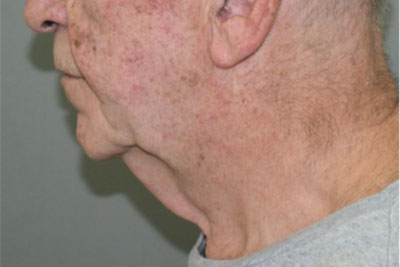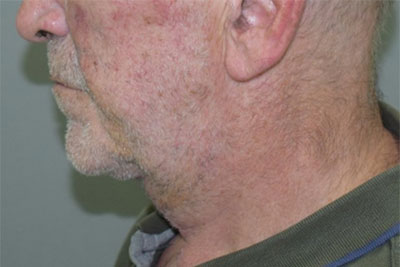Contact us today to schedule your appointment!
-
Call Us at +91-96000-58899
-
Call Us at +91-94440-35171
-
Call on Viber +91-89395-02777
-
Chat on WhatsApp +91-89395-02777
-
Chat on Telegram +91-96000-58899
-
Contact us today to schedule your appointment!
Jump To
Facelift is a procedure to surgically improve visible signs of ageing in the face and neck. But it is important to bear in mind that it does not change ones fundamental appearance nor stop the ongoing aging process. Non surgical treatments cannot match the outcome of a surgical facelift but can buy time before its time for a facelift.
The ideal candidates for facelift are men and women who exhibit one or more of the issues listed below:
A facelift essentially brings about the youthful appearance by the following means:
The nasolabial folds known as the smile lines or the laugh lines when become prominent are considered to be one of most commonest aging sign. These lines can be corrected using fat transfer or a filler. Facelift is also done to minimize the depth of these folds. However these folds when deep and flabby could not be corrected with the above mentioned treatments. This is where direct excision plays a vital role.
The direct excision of extremely deep nasolabial folds is a quite reasonable procedure. Most of the times this procedure is done as an adjunct to facelifts.
ADVANTAGES:
DISADVANTAGES:


Your preliminary consultation with our Cosmetic / Plastic Surgeon will include an understanding of your skin type, degree of skin elasticity, ethnicity, age, detailed medical history and your mental and emotional attitudes to arrive at the type of face lift that might best suit you. Our surgeon will brief you of the technique involved, anesthesia etc.
At Chennai Plastic Surgery, our experienced surgeons analyze where the volume has been lost and the reasons behind the sagging, thereby providing a more apt treatment option and prepare the patient for realistic outcomes. Chennai Plastic Surgery offers excellent skin care options in addition to the surgery to address the sagging face.
You will be advised to stop smoking at least four weeks before surgery. Besides, the surgeon shall advice you to avoid certain medications such as Aspirin (blood thinning agents).
At Chennai Plastic Surgery, the facelift surgery is performed under General Anaesthesia by our team of skilled Cosmetic and Plastic Surgeons. Following incision, the skin is raised and separated from the underlying fat and muscle. Fat is either cut out or suctioned out from the neck and chin region, while tightening the underlying muscles simultaneously. The surgeons will then pull the skin back, lift it, hold it in position and trim any excess skin before closing the incisions. In the male patients, incisions will be placed in such a way that it can accommodate natural beard lines.
There are various types of facelifts:
Mini Lift
S-Lift
Mid-facelift:
Tissue glue facelift:
Following the procedure, dressing in the form of loosely wrapped bandages is done to protect the incision areas and minimize bruising and swelling. A small drain tube will be temporarily placed under the skin behind the ear to drain any fluid collection.
Patients experience some numbness around the ear lobes, face and neck for several weeks. Tightness of the mouth opening and tightness of the neck is a commonplace. The heavy dressing might give patients a sense of difficulty in breathing and swallowing. There may be small irregularities under the skin that will subside and resolve.
At Chennai Plastic Surgery, the patient is typically discharged the very same day. However, at the end of 24 and 48 hours, they may have to visit the center for our surgeon to redress and check for any fluid accumulation or infection. You will need to wait for at least 6 months for the complete healing.
Our clients are permitted to bathe and shower on day 3 following surgery. Care should be taken while combing hair. They are advised not to rub, wash or massage their face unless our surgeons advise to do so.
Facelifts are safe. However, a loss of sensation along the incision sometimes occurs. Most often it is temporary and will settle in a few days. Very rarely, it could result in paralysis around the eyebrows and lower face resulting from nerve injury. The only sensible way to avoid such complications is to select an experienced and qualified surgeon. And following the surgeon’s instructions will help resolve the issues to a great extent.
Other than this, a few issues that might occur are:
For more information on our procedures or if you are interested in scheduling an appointment please reach us here, or by clicking on the QR code below. We will let you know if you are a good candidate for the procedure, and can recommend any additional treatments that can help you reach your beauty goals.








